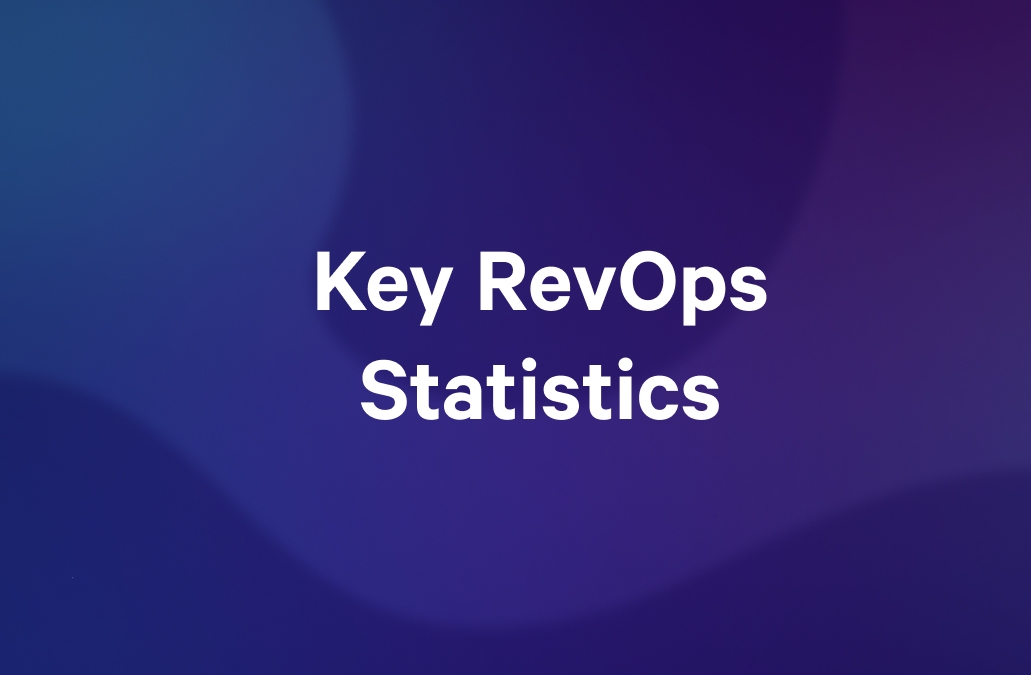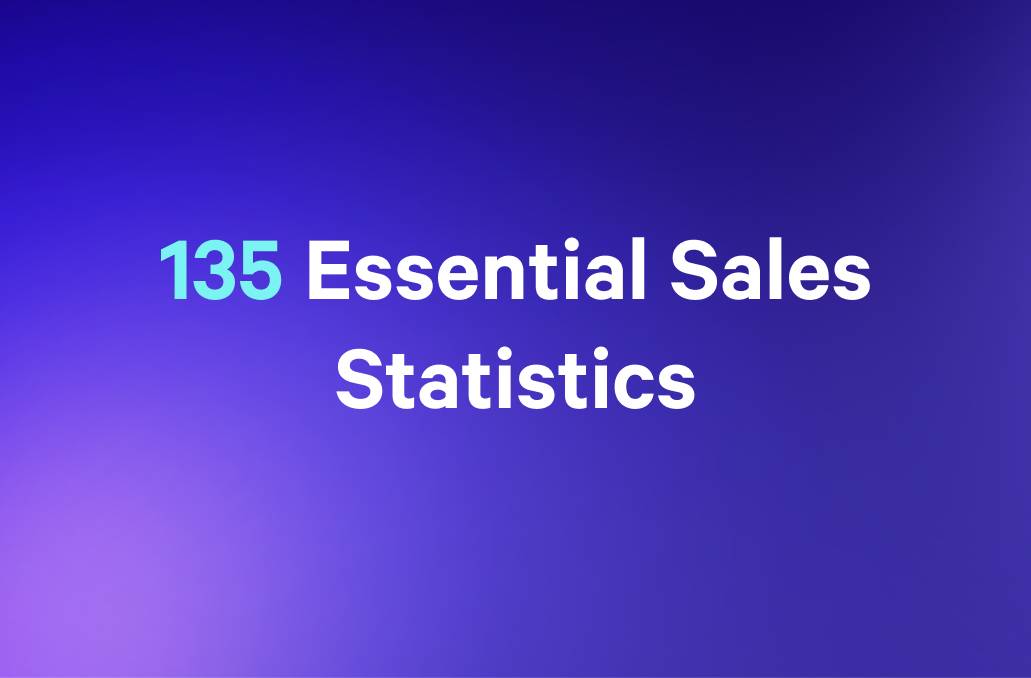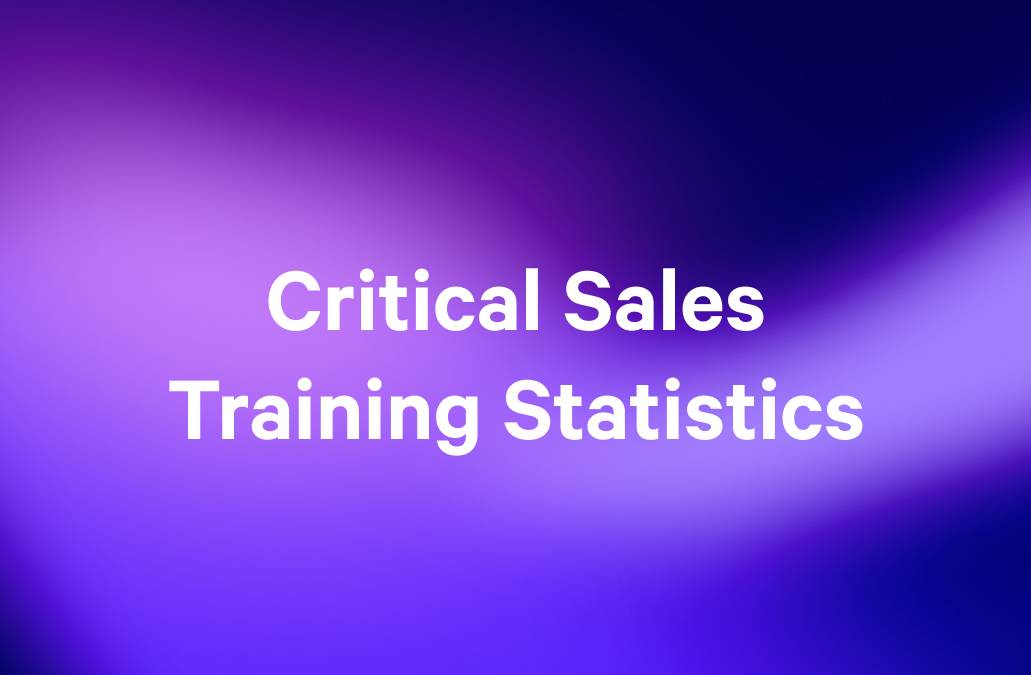Deals are rarely won in a single moment.
They’re won in the buildup, the repetitions, and the quiet persistence most people give up on too soon.
Let’s break down what the stats say about sales closing, and more importantly, how to turn those insights into strategies that improve your actual results.
Why the figures fuel your focus
Sales stats don’t just provide trivia for your next pipeline meeting, they reveal the patterns—the odds you’re playing against, the behaviors that increase your chances, and the habits that quietly erode them.
Think of them less as cold numbers and more as road signs. Ignore them, and you’ll eventually drive into a ditch. Pay attention, and you’ll navigate closing with much more clarity.
Stats about stats: Why numbers help you close
It’s a little ironic to use statistics to prove that statistics work, but in sales, they absolutely do. Prospects are wired to trust data. Buyers are increasingly using said trusty insights to inform their decisions. According to the 2023 Demand Gen Report, personalized, data-backed content enables B2B teams to fast-track buyer enablement and speed up the path to purchase
Here are some key statistics that highlight the importance of integrating data into your sales strategy:
- 54% of buyers are overwhelmed by the amount of content available, but quality is often lacking.
- 63% of customers say statistics and case studies are the most convincing form of content during the buying journey.
- 74% of buyers say they are more likely to trust a sales professional who cites relevant data and research.
These statistics underscore the power of incorporating relevant data into your sales conversations. By presenting well-researched, data-backed information, you not only capture attention but also build credibility and trust with your prospects. In a landscape where buyers are inundated with information, providing clear, concise, and relevant data can set you apart and accelerate the decision-making process.
Luckily, you don’t have to manually turn numbers into eye-catching, clickable, scroll-stopping content.
Method, madness, who really knows where one ends and the other begins? The steps below are your sales GPS—each step a turn, a nudge, or a shortcut that keeps you on the path to more “yesses.”
Step 1: Benchmark your close rates
Before you can improve, you need to know where you stand.
It’s remarkable how many teams don’t actually measure their close rate beyond gut feel. The math is simple: take the number of deals you win, divide it by the number of opportunities you pursue, and there’s your close rate.
Here’s the sobering part.
Across industries, the average close rate sits at around 20%. In B2B, it’s closer to 21%.
A 2024 Hubspot report says the software industry sees about 22% average closing, finance around 19%, and business & industrial sectors can reach 27%. That means four out of five prospects you talk to will say “no,” or more often, will say nothing at all and just drift into the abyss of “lost opportunities.”
Knowing these benchmarks matters. If you’re hitting 30%, you’re outperforming the norm. If you’re at 10%, there’s work to do. Without a benchmark, you’re steering blind.
And here’s where the tools matter. Proposals are often the graveyard of deals: they’re sent, never opened, and then politely ignored.
But when you use Qwilr, you can track exactly how prospects interact with your proposals—whether they linger on pricing or skim the first page and vanish. That context transforms “our close rate is low” into “our close rate is low because prospects drop off at pricing, indicating that we’re not communicating pricing successfully or prospects see our pricing as a blocker.” This gives you actionable insights to improve your strategy.
It’s not glamorous work, but neither is brushing your teeth. Both prevent future pain.
Step 2: Master the follow-up game
Salespeople like to believe in the “one-call close.” Reality, however, is less cinematic. Data from follow-up research shows that 80% of successful sales require five or more follow-ups. Yet 44% of sales reps give up after just one attempt.
We’re back again, with a recent HubSpot report, which shows that 80% of successful sales require five or more follow-ups, yet 44% of sales reps give up after just one attempt.
The implication is painful: half the industry is walking away just as the odds start to tilt in their favor. Imagine leaving the casino table right before the dealer starts dealing your winning hand?
Follow-ups work because they compound. The first is a nudge. The second shows persistence. By the fifth, you’ve proven you’re serious. Of course, follow-ups must be done with finesse (nobody wants to be the sales equivalent of a mosquito buzzing around the room).
The art is in delivering value each time. Instead of “just checking in,” it’s “I thought of you when I saw this case study” or “I updated the proposal with the priorities you mentioned.”
Tools can help here, too. A static PDF proposal forces you to send a new file each time you tweak a sentence. A dynamic Qwilr proposal updates live, so every follow-up feels fresh without reinventing the wheel. Proposal analytics also helps you time your follow-ups perfectly. You’ll know exactly when someone viewed your proposal and how long they spent on each page. You can follow up with a personalized message after they’ve viewed, zeroing in on where they spent time or dropped off.
Step 3: Respond fast to inbound leads
The data on speed is crystal clear. If you respond to an inbound lead within the first hour, your chances of connecting and eventually closing skyrocket. Wait a day, and you might as well be shouting into the void. Prospects don’t wait around; they move on to the competitor who replied faster.
In fact, studies show that on average, B2B sales teams take 42 hours to respond to new leads, and 38% of those leads never reply. Meanwhile, businesses that respond in 5 minutes or less are 100× more likely to connect and convert.
This isn’t about spamming prospects with generic templates at 3 a.m. It’s about being prepared. The best sales teams have playbooks for rapid response. They know that when a lead fills out a form, every minute counts.
Think about it: if a prospect downloads your case study at 9:00 a.m. and you send them a personalized note by 9:30, you’re not just fast, you’re relevant. You’re striking while their interest is fresh, not when they’ve already moved on to lunch.
And again, technology can give you that edge. Qwilr notifies you when a prospect opens your proposal, so you know precisely when to engage. You don’t need to guess; the data tells you the right time to call or follow up. It’s not about being pushy. It’s about being present.
Step 4: Personalize (because buyers expect it)
We live in a world where Netflix curates our Friday nights and Spotify predicts our Monday moods. Buyers expect the same in sales. A generic proposal, riddled with placeholders and boilerplate, stands out like a cold email that begins with “Dear [First Name].”
Personalization increases engagement, accelerates deal velocity, and lifts win rates. And honestly, it’s common sense. People like to feel seen. They like to know you’ve done your homework.
Personalization doesn’t mean rewriting War and Peace for every prospect. It means tailoring key sections: swapping in industry-relevant examples, referencing the challenges they mentioned, and showing you understand their goals. Done well, it makes a prospect think: “This isn’t just another pitch. This is for me.”
Here are fresh data points to reinforce that:
- 80% of consumers are more likely to make a purchase from a brand that provides personalized experiences.
- Companies that invest in personalization often see their efforts exceed targets - 68% report such outcomes.
- Using behavioral data in personalization can increase conversion rates by up to 20%.
- 75% of marketers say personalization increases engagement.
The good news? Qwilr’s proposal templates let you mix and match content quickly. The result feels bespoke to the buyer, but doesn’t require you to reinvent the wheel at 11 p.m. the night before.

Step 5: Focus on quality, not just quantity
There’s an old saying in sales: “Fill the funnel, and the numbers will take care of themselves.” Except they don’t. If you’re chasing every lead with a pulse, you’ll waste time on prospects who were never going to buy in the first place.
High-performing sales teams are ruthless about qualification. They know that the probability of closing a deal depends heavily on fit - think industry, budget, authority, and timing. A sales pipeline full of bad-fit leads is like a fridge full of expired yogurt. Full, yes. Useful, no.
DesignRush stats back this:
- 61% of marketers say generating high-quality leads is their biggest challenge.
- Sales teams that excel at qualification see up to 30% higher win rates (industry benchmark) - many reports suggest disciplined qualification is strongly correlated with win-rate uplift.
The smarter play is to score leads and prioritize those with the highest potential. That doesn’t mean ignoring the rest, but it does mean allocating energy wisely. Five well-qualified conversations are worth more than 50 half-hearted ones. Read that again.
Quality also extends to your proposals. A bloated, jargon-heavy deck signals you don’t understand what the buyer cares about. A crisp, tailored Qwilr proposal signals respect. Buyers notice the difference.
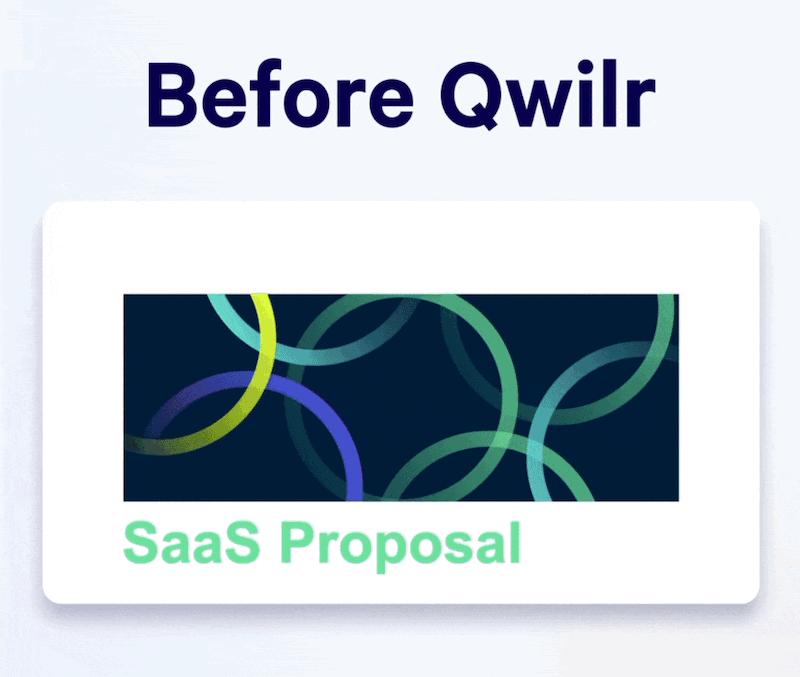
Step 6: Track and learn from the data
Here’s where many sales teams fall flat. They talk endlessly about “what works” in closing, but rarely look at actual data to back it up. It’s like arguing about the best way to bake bread while refusing to measure the oven temperature.
Tracking matters because it reveals bottlenecks. Suppose your close rate is 18%. Without data, you might assume it’s because of pricing. But if you look closer, you might find most deals die after the second meeting, before pricing is even discussed. That’s a process problem, not a pricing problem.
The right kind of tracking shows you patterns: which industries close fastest, which reps excel at follow-ups, which proposal sections prospects linger on, which they ignore. Each pattern gives you a lever to pull.
Hello Hubspot:
- Top-performing sales teams are 1.5× more likely to base forecasts on data-driven insights instead of intuition
- Companies using sales analytics improve quota attainment by 12–15% (industry research).
And once you see those patterns, you can act. With Qwilr, you can see exactly which sections prospects interact with, which they skip, and which they revisit - allowing you to optimize proposals, focus your follow-ups, and adjust your pitch to what actually matters.
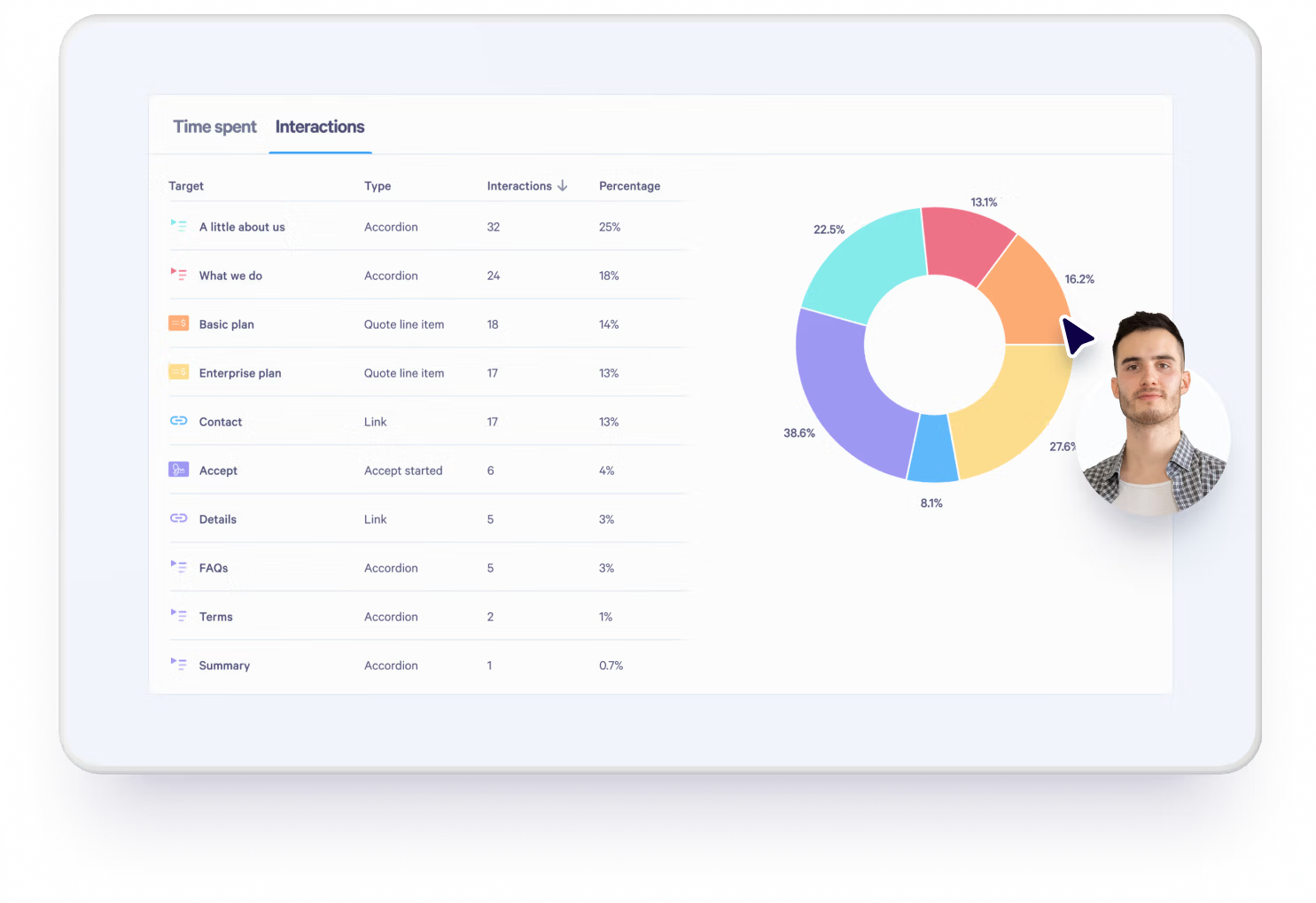
Step 7: Keep testing and iterating
A message to write home about: 71% of high-growth companies test multiple variations of sales outreach and messaging monthly.
Sales isn’t static. Buyer behavior evolves, competitors shift their messaging, and what worked last quarter might fall flat this quarter. That’s why the best teams treat sales like a lab. They experiment.
A/B testing sales emails alone can increase response rates by up to 49%. Testing can be as simple as sending two variations of a proposal, one with a pricing table upfront and one with pricing later. Or experimenting with follow-up timing: do you get better results calling within an hour, or within three? Over time, these micro-tests add up to significant improvements.
The danger is assuming you’re done. You’re not. Even the top sales teams revisit their playbooks quarterly. They know complacency is the silent killer of close rates.
The trick is to balance consistency with curiosity. Run your proven plays, but never stop asking, “What if we tried it this way?”
Qwilr makes experimentation painless: you can clone proposals, tweak sections, and test different layouts or content modules without starting from scratch. That blend of discipline and experimentation keeps you ahead.
Qwilr documents also have collaborative editing: Work with your team internally on the same document, reducing back-and-forth emails and keeping messaging consistent.
And what’s more? Integrations with CRM tools: Connect Qwilr to your CRM to automatically pull in client data, streamline workflows, and save hours of manual work.
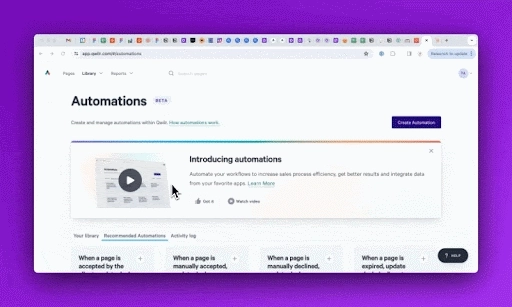
Case Study: How Stafflink used these strategies to double their close rate
Stafflink, a real-estate support agency based in Australia, was sending out standard PDF proposals and seeing inconsistent engagement. Their close rate for key services (like website and SEO packages) hovered around 25%. Looking to stand out, they switched to interactive Qwilr proposals, embedding videos, ROI calculators, and more engaging design.
The results were dramatic. Within a short period, Stafflink doubled their close rate for those services (to about 50%) and saw prospects spend far longer reviewing proposals - from less than a minute to 30-40 minutes in some cases. Because proposals were more compelling, some follow-ups became unnecessary or shifted from explanatory to consultative.
What can you learn from their journey? First, knowing your baseline gives you a target. Second, when you give prospects something engaging to interact with, it changes how they perceive your proposal. Third, using data (how long people view your proposal, which parts they engage with) lets you tailor follow-ups in smarter ways. Finally, cleaner, faster proposal creation with Qwilr lets you send more proposals without sacrificing quality.
Signing off
While the human side of sales - empathy, persistence, listening - will always matter most, the right tools can give those qualities a louder microphone.
In the end, the statistics show us what we’ve always suspected: closing isn’t about pressure. It’s about presence. And presence, done well and done consistently, wins deals. Sign up for a free trial with Qwilr and double those close rates.
About the author

Brendan Connaughton|Head of Growth Marketing
Brendan heads up growth marketing and demand generation at Qwilr, overseeing performance marketing, SEO, and lifecycle initiatives. Brendan has been instrumental in developing go-to-market functions for a number of high-growth startups and challenger brands.
